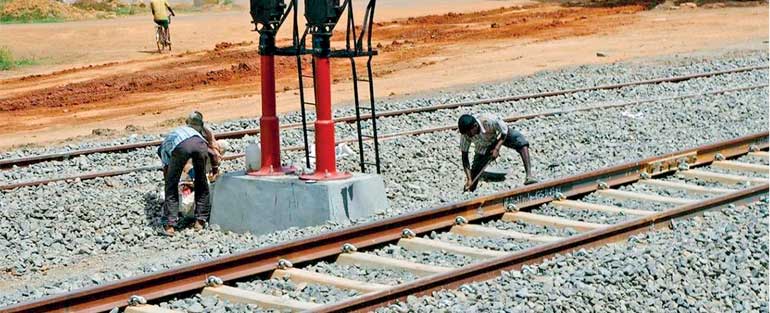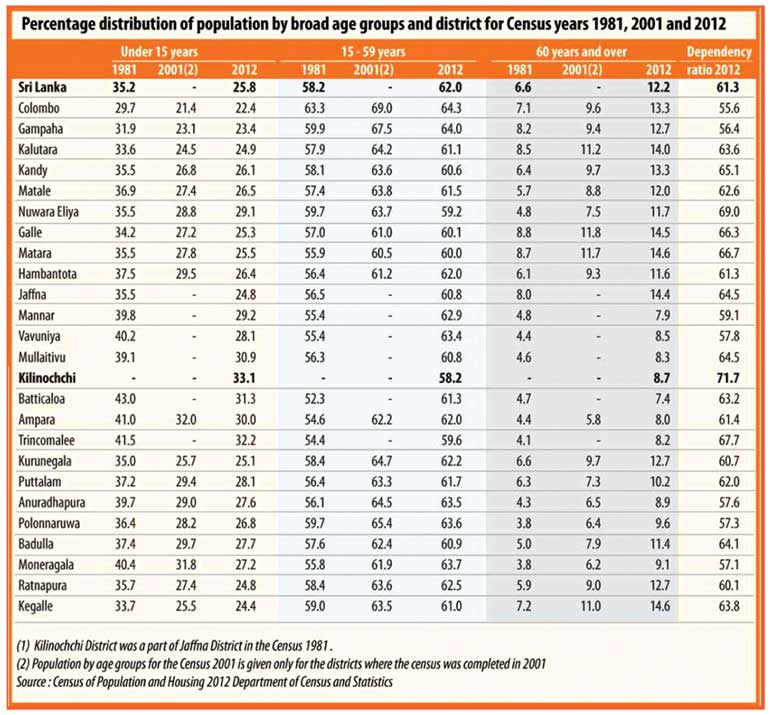Wednesday Jan 07, 2026
Wednesday Jan 07, 2026
Tuesday, 26 July 2016 00:01 - - {{hitsCtrl.values.hits}}
I still remember travelling in an armed car on route to Kilinochchi and then taking an Air Force chopper that hugged a railway track to avoid sniper attacks way back in 2007-2009. At that time Kilinochchi was making headline news daily, given that the nerve centre of the rebels was located in this area. Post 2009, many development initiatives were started in Kilinochchi given that the youngest work force in Sri Lanka was said to be in this area.
I was intrigued to understand the logic behind the statistics of the highest percentage of people below 15 years in the island at 33.1% being recorded from Kilinochchi. The insight was clear. The high casualty rate from the war was out of Kilinochchi and knowing the yearning for youngsters to experience freedom, the private sector and the Government focused on starting the northern development drive from this district.
However, post 8 January we have seen a gradual shift from this policy and let’s accept it, today Kilinochchi has become a lost city. Let me do a deep dive on Kilinochchi.
 The railroad system developed via Kilinochchi can initiate the transport of vegetables and dairy from Jaffna to Colombo and give leadership to the country
The railroad system developed via Kilinochchi can initiate the transport of vegetables and dairy from Jaffna to Colombo and give leadership to the country
Kilinochchi is the 25th district of the country and the name was derived from the names Giraa-Nikey or Giraa Nochchiya, meaning the Nika (vitex Negundo) trees that formed the secondary Kilinochchi. Some called it the flock of parrots, Girawaas.
Kilinochchi over the years became a strategic location in the country due to the political, socioeconomic and cultural history in that part of the country. The LTTE used Kilinochchi as its operation centre, which made the district globally known. A land area of 1,237 square miles with a population of around 150,000 in 1998, many people avoided living in that area due to the threat of malaria.
Incidentally, Kilinochchi is considered one of the coolest towns in the dry zone because of the tank that is in the heart of the district called Iranamadu, which happens to be the third largest in the country. The tank covers a geographical spread of four km and the elevation of the district is around 150m above sea level. It is situated just 60km from Jaffna on the A9 Jaffna-Kandy Road.
Kilinochchi registers the highest percentage of people below 15 years at 33.1%; this number is way below the country average of 25.8%, which means that infrastructure that is related to education will play a key role in the shape of the future generation. It also means that a new thinking wave can be instilled based on the ethos of economic development provided that the teacher-student ratio  can be managed.
can be managed.
I remember once visiting the town of Vellanai where I heard the real feedback of peace. Apparently way back in the LTTE times when the children were in school at sessions they would be hauled up and taken for combat training by the LTTE and the teachers were asked to construct bunkers. But today, they are feelings of real freedom with no hindrance to education. To me this was real impact of peace for a Sri Lankan family.
However, a point to note is that the dependence ratio is also registering a high number of 71.7%, which means that livelihood development is key to the future stability of the district. Maybe it’s worth pursuing if one can move the district from an agricultural-based economy to an industrial one with apparel factories setting up, linked to vocational training. Maybe the setting up of an industrial zone is worth pursing given the young population that exists in Kilinochchi.
The recorded population in Kilinochchi as per the 2011 Census is around 112,875 people, with almost 97% of them being Sri Lankan Tamils. A point to note is that the highest percentage of migrants is registered in this district at 96.9%, which means that housing and land becomes the key issue for basic living purposes.
With the Indian housing project and many other national programs coming into play, companies in the fast moving consumer sector as well as consumer durables will be the most demanded product category – provided the purchasing power issue is resolved.
Most homes are made of block cement (49.2%) as against the national average of 33.5%, which means that basic tiling will be in demand as and when purchasing power becomes stronger. The report from the Department of Census and Statistics indicates that the number of homes stands at 61.1% whilst people living in shanties and huts record 20.8%. This number may have gone down in the last six to nine months, but the need for housing-related products will be in the rise.

Well water is the most popular in the Kilinochchi District, with almost 66.4% of the people having access to protected wells but river and tank water consumption is also high at 6.1%, which is interesting. The national average is that households’ drinking water from protected wells is at 46.4% whilst pipe-borne water is at 30.5%, which is zero in Kilinochchi. This indicates the market opportunity for companies like S-Lon in the years to come.
The availability of an attached toilet exclusively to a household at 62.1% is a strong indicator given that the national average is at only 86.4%. But those not using a toilet, at 22.3% is high, which needs to be corrected. Maybe in the last six to nine months this number may have drastically changed given the development that has taken form. From a marketing point of view it also captures the opportunity in the market place.
A point to note is that only 10.2% have electricity driven lighting and almost 78.8% use kerosene. The national average is 87.8% for electricity and only 11.5% being dependent on the use of kerosene. But on a positive note solar powered lighting is at a high of 10.8% of the households, which is interesting.
1. The private sector must be cognisant of the above facts and evaluate the option of setting up production units in Kilinochchi.
2. There is a correlation between terrorism and poverty and unless the government focussed on the under 15 age group there can be an uprising.
3. New industries like tourism can develop a brand name like globally of Kilinochchi based on the uniqueness of the people in that geographic area.
4) International logistic companies like Swire can set up state-of-the-art logistics and warehousing hub in Kilinochchi, connecting the north and south.